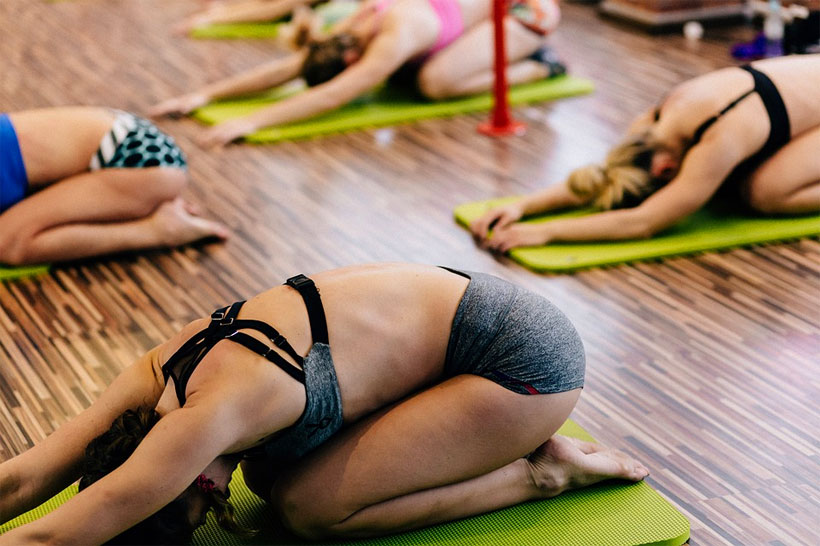- Like
- SHARE
- Digg
- Del
- Tumblr
- VKontakte
- Flattr
- Buffer
- Love This
- Save
- Odnoklassniki
- Meneame
- Blogger
- Amazon
- Yahoo Mail
- Gmail
- AOL
- Newsvine
- HackerNews
- Evernote
- MySpace
- Mail.ru
- Viadeo
- Line
- Comments
- Yummly
- SMS
- Viber
- Telegram
- JOIN
- Skype
- Facebook Messenger
- Kakao
- LiveJournal
- Yammer
- Edgar
- Fintel
- Mix
- Instapaper
- Copy Link
Introduction
 Athletes regularly seek out ways to overcome fatigue and get back on the playing field or in the gym.
Athletes regularly seek out ways to overcome fatigue and get back on the playing field or in the gym.
Overexerting the body can leave your muscles tired, making it impossible to compete at a high level.
There are a number of ways athletes can rebound from muscle fatigue and recover from hard games, training sessions, or gym workouts naturally.
Not all muscle recovery methods are natural ways to rebound. Some muscle recovery techniques may lead to you using unnatural substances that affect your athletic performances negatively.
More individuals are focusing on natural ways to live these days, and that is being reflected in the way athletes seek muscle recovery.
Natural Ways to Speed Up Muscle Recovery After Your Workout
If you are looking to maximize your training and game results, these natural muscle recovery tips will enable you to bounce back quickly.
Drink fluids and hydrate
Fluids are vital for an athlete to get the best out of their bodies and workouts. Hydration doesn’t happen just after a workout; it starts before and continues on well after it is over. Muscle fatigue occurs due to the stress of working out, but a lack of hydration only makes matters worse. If you want to prevent your muscles from being fatigued, then drinking fluids before, during, and after an intense workout is needed.
Proper hydration also prevents muscle damage from occurring. By skipping out on your hydration and ignoring your drink bottle, you can suffer from muscle cramps that damage the afflicted area. It is common to see gym-goers carrying around a large jug of water and sipping from it during a workout. After the session finishes, it is just as important (if not more so) to continue that hydration to prevent muscle tears, tiredness, and tightness. Post-workout hydration means your muscles recover quicker.
High-quality night’s sleep
Sleep is the body’s way to heal itself. It is during sleep that muscles can recover and feel fresh following a gym session. If you are not getting enough sleep at night, then your body nor mind can get the rest it needs to recover.
Sleep is a natural process, and it allows you to re-build those fatigued muscles, tears, and damaged areas. You should aim for a full eight hours of sleep each night to get the most out of your body following a hard training session.
To be honest, you should always get an eight-hour sleep to be in the best physical and mental shape possible anyway. If it is possible during the week, try to add a nap or two into your schedule.
Foam rollers
A foam roller can be your best friend, post-workout. Foam rollers allow you to massage the tension and tightness away in your aching muscles. You can use a foam roller to target a specific area to release tension.
You can also break up scar tissue or swelling. Foam rollers allow blood flow to reach the region of the body that you massage with the roller to enable muscle recovery. Foam rollers come in a variety of shapes and sizes. The differences in shape and size allow you to find a foam roller that fits the trigger point(s) you need to massage.
Foam rollers have only recently been used widely by non-elite athletes as the benefits have become more well-known. You may feel awkward using one for the first time, but after a few attempts, it becomes second nature. One reason individuals purchase foam rollers is due to them being a fraction of the price of a massage.
Massage
Massages have long been used by athletes to aid muscle recovery. Like a foam roller, massages can target certain areas and rub away tension in muscles. A masseur’s touch can also improve blood flow to sore muscle areas.
According to a 2012 New York Times article, massages reduced cytokines. These compounds are major players in the creation of inflammation. Massages also help the body’s cells to recover by stimulating mitochondria, which is found inside the cells and helps them to repair after being damaged.
Massages do not come cheap, however. A masseur is a well-training individual with knowledge of muscles and pressure points. Some athletes will use foam rollers as a way to get a massage. If you have never had a massage and need to improve muscle recovery, you should get a massage from a trained professional.
Focus on adding protein without supplements
Go to any gym with men and women hammering out intense sessions, and you are bound to see individuals sucking down protein shakes. Protein is key to building muscles and repairing the damage muscles experience during a workout.
Yet, sucking down protein shakes after every session isn’t necessarily what you need to do to improve muscle recovery. You can get plenty of high-quality protein into your diet naturally without taking expensive supplements that provide just as much muscle-building nutrients as natural foods.
Some of the foods that provide muscle-building protein include lean meats, eggs, fish, cottage cheese, and Greek yogurt. These are natural foods that give you all the protein and nutrients you need post-workout.
Plan rest days
Everyone has a different plan when it comes to working out and getting fit. Some individuals push hard and workout consecutive days without a rest period. While that may work for them, they should be taking rest days to give muscles the chance to recover and rebound.
Rest days should be planned out on a schedule to maximize the workouts you have done. Recovery days can be great for working out your body with stretches, foam rollers, and even yoga. A rest day doesn’t mean eating foods that undo your workouts and gains. A rest day is simply a way to let your muscles have a day off of intensive gym work.
Take regular cold baths
Elite athletes have been using cold ice baths for decades to relax tight muscles and reduce inflammation. A cold bath is a great tool to have in your post-workout arsenal despite it being excruciating to get into the first time.
Cold baths can reduce inflammation in the body for up to 48 hours. If you want to avoid taking medications such as ibuprofen and other anti-inflammatory medicines that are not natural, then using the soothing coldness of an ice bath can help your aching muscles to recover more quickly.
Stretch and/or practice yoga
An active recovery day is one in which you do a different type of exercise that is easier on the body and muscles. There are some great active day routines you can use to promote muscle recovery.
Stretching is a very simple routine you can use to lengthen muscles and remove tightness. Not only does stretching lengthen muscles, but it enables them to grow. When you start lifting again, these long muscles can increase even more in size.
Yoga is one of the best ways to build muscles and work on cardio at the same time. It also enables you to stretch muscles and become more flexible. Yoga is one of the best all-around workouts you can do, and one more weightlifters and athletes should use on a regular basis. Another great reason to use yoga is it allows you to build muscle and burn calories without beating up your body.
Cherry juice
If you want a natural substance to reduce muscle fatigue and promote recovery, then cherry juice is one of the best. Researchers at the Sports and Exercise Science Research Centre at London South Bank University found that the antioxidant-rich drink can reduce muscle damage. Muscles can then recover faster than by drinking other types of juices and concoctions post-workout.
Anthocyanins are found in cherries and give them their red colors. Anthocyanins are credited as an anti-inflammatory and the nutrient that makes cherry juice so sought-after by the gym-goers post-training session.
Gym-goers and other athletes may want to drink cherry juice for more reasons, along with being an anti-inflammatory. Cherry juice is believed to be good for individuals suffering from arthritis and heart disease. Who knew cherries were such a magical fruit?
Compression clothing
Compression clothing is a great way to improve muscle recovery post-workout due to the tightness of items increasing blood flow to muscles. Compression clothing also keeps the body warm and prevents muscles from cooling. Not all compression clothing is of the same quality as wearing high-quality compression items enables greater circulation in the body. Better circulation means increased muscle recovery.
Your muscles will also be supported by compression tights, socks, and shirts. The support will hold muscles in place following a strenuous workout.
Researchers have found that compression items worn post-workout (not during workouts) is ideal for muscle recovery. Compression clothing reduces muscle soreness and gets the body to recover quicker than by just wearing normal clothing items.
Conclusion
Natural muscle recovery can get you back in the gym or on the playing field sooner rather than later. By using these natural methods, your body will be fully re-charged and ready to go once more.
About Shannon Clark
Shannon holds a degree in Exercise Science and is a certified personal trainer and fitness writer with over 10 years of industry experience.

